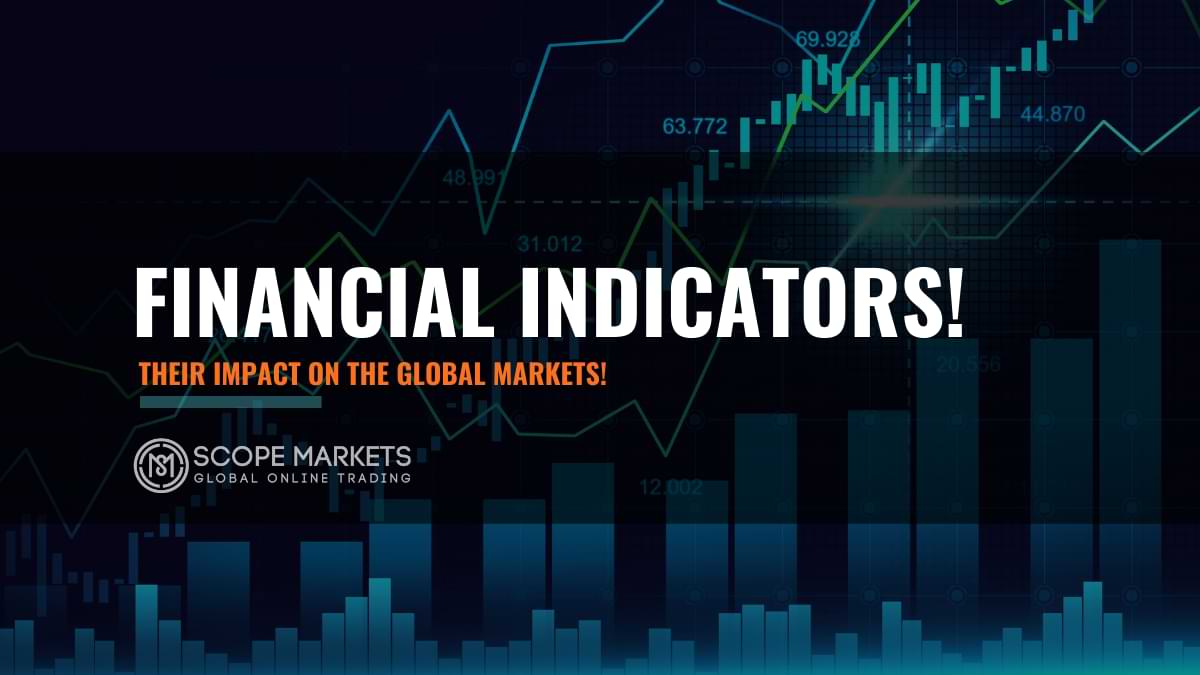List of Investment Indicators and Their Impact

Table of Content
Knowing the diverse investment indicators may be a tough task for many new investors. Our aim here is to find out some essential Investment Indicators. Not the same as leading indicators, these are not planned as short-term forecasters. The power of these metrics is a device to assess prospective real, long-lasting returns.
So, they are very well used as long-term indicators of worth, risk, and anticipated returns. They, in no manner, should get used as any kind of timing method. The stock market can go on a higher indifference of what any valuation metric is depicting.
Different Kinds of Investment Indicators and Their Impact
Understanding how to use every indicator is not a simple task. Because, specific stocks or market segments would not get affected by good or bad news, which affects that specific niche. This occurs for a range of reasons. In particular, systemic causes that signify the economy as a whole.
Or even the business sequence will get reduced to the market’s sentiment. That generally signifies the sentiment in the market. This is generally depicted as market volatility.
These investment indicators are then planned to be a useful tool. Thus, to assist in shaping a whole investment theory and procedure. Also, to take out short as well as long-term affairs, not to mandate trading verdicts.
This is the sum every share will get if a firm paid out all its revenue to its investors. It is then calculated by parting or dividing a firm’s whole profit by the number of stocks or shares.
Let’s take an example. If an organization’s total profit is $300 million and shares are 10 million, then the Earnings per share is $20.
EPS can describe to you how firms in a similar niche check. Organizations that depict constant earnings growth, year by year. That will generally outperform organizations with unstable earnings beyond time.
2. P/E or Price to Earnings Ratio Indicator
This checks the interrelation between the profits or earnings of a firm and its stock cost. It is then calculated by parting the present cost per share of a firm’s share by the firm’s earnings per share.
For example, An organization’s stock at present sells or exchanges for $50 for each share. Also, its EPS is $5. That signifies it has a Price to Earnings ratio of 10, i.e., $50 parting or divided by $5.
The Price to Earnings ratio can describe you even if a stock’s cost is high, or low, evaluated to its income.
A few investors think of a firm with an increased P/E to get overpaid. But, sometimes a firm with an increased P/E today can give increased returns, and the best P/E, in the prospect. So, how do you find out? You will have to consider different indicators previous to your choice.
Check out events, reports releases, and announcements that could shake the markets.
3. P/E to growth ratio or PEG Indicator
This assists you know the P/E ratio somewhat very well. It is generally assessed by dividing or parting the P/E ratio by a firm’s outlined growth in income.
Let’s suppose, a stock with a P/E of thirty and outlined earnings development next year of 15% will have a PEG or P/E to the growth of 2. A share with a P/E of 30, but outlined earnings development of 30% would have a PEG of 1.
This indicator can describe you even if a stock can or cannot be the best value. The lesser the sum, the less you need to reimburse to meet the firm’s anticipated future income growth.
4. P/B or Price to book value ratio
This evaluates the worth the market keeps on a firm with the worth the firm has shown in its accounting books. It is generally calculated by parting the present cost per share by the value of the book for each share. The value of the book is the present equity of a firm, as stated in the yearly report.
All the time, the lesser the P/B value is, the more effective. That is why you are giving less for a bigger book value.
If you are considering an effectively-priced stock with the best growth potential. Then, you may wish to make use of a reduced P/B like a tool to check workable stock choices.
5. DPR Indicator or Dividend payout ratio
This checks what a firm gives to stockholders in dividends assessed to what the stock is getting. It is then evaluated by dividing the yearly dividends for each share by the Earnings Per Share.
For example, if a firm paid out $1 for each share in dividends, and had an earning per share of $3, the DPR will be almost 33%.
The DPR indicator can offer you a thought of how fast a firm’s earnings hold the allowance or dividend amounts. More grown firms will generally have an increased DPR. They think that giving more dividends is an essential use of their revenue for the firm and its stockholders. As growing firms are likely to have less or no income to give dividends, their DPR will tend to be less or zero.
6. Indicator of dividend yield
This assesses the reversion on a dividend like a ratio of the stock price. It is usually measured by parting the yearly dividend-per-stock by the cost per stock.
The dividend growth also brings with it the prospective development of the share. As usual, a growing dividend is the best indicator of the price of the stock. The investing person observes that an increasing dividend is a strong indicator of the firm’s financial well-being.

A firm can be able to evade earnings and different soft numbers. But, when a dividend gets reimbursed, that’s a tough thing that the firm is thriving with its whole or net profit. Only check the long-term share chart (like 5-years or more) of a constant dividend-paying firm. Also, most of the time, that share price is going upward in the same pattern.
For Example – Two stocks in which each pays a yearly dividend of $1 for each share. Firm A’s share is trading at $40, but firm B’s share is trading at $20. Firm A gets a yield or earning of 2.5% (1 parting by 40), whereas firm B’s is 5% (1 parting by 20).
The dividend yield can state you how much flow of cash you are getting for your cash, all different things are equal.
7. Investment Indicator of Market-Cap to GDP Ratio
Market Capitalization to GDP ratio has been generally discussed by Warren Buffet. He says that it is a single check where valuations stay at any given time. It evaluates the whole price of all publicly-traded firms to GDP.
This metric can also be generally considered as an economic cost to sales ratio. As the data is for three-months, the data for the different months have been then entered via the previous ratio fixed for stock prices change.
8. Bond Yields Indicator
Bond returns rely on the primary bond yield and on next yield modifications. Reduced bond yields tend to change into lesser returns as less earning and more risk of interest-rate. As Warren Buffett has said that interest rates do as gravity does in the real world.
Every time, in all markets, the smallest change in rates modifies each financial stock’s worth. If interest rates are, for example, 13%, the current worth of a dollar that you are going to get in the prospect from an asset is not as much as the current worth of a dollar if the interest rate is 4%.
9. Inflation Investment Indicators
Various investors, particularly those who invest first in fixed-income bonds, are generally related to inflation. Present inflation, how powerful it is, and what it can be in the prospect are essential in knowing current interest rates and investment strategies.
Many indicators aim at the inflationary force. The most remarkable in this group are the PPI or Producer Price Index and CPI or Consumer Price Index. Several investors would use the PPI to find and forecast future CPI.
Indicators may assist you in checking the worth of a stock and its growth perspective. But, different factors are impacting the prices of stock that we cannot measure.
References:
Rpseawright – Leading-investment-indicators
Investopedia – Economic_indicators
Getsmarteraboutmoney – 6 indicators used to assess stocks
Dummies – 10 indicators great stock
Final Words
Selecting investment indicators must not use what’s most well-known, what your digital broker suggests, or what your chart software markets. But what is good for your trade style and tactics.
If you use a more exploited indicator, then be attentive that High-Frequency Traders or HFTs are now using algorithms that fast check big groups of traders all trading with these stock indicators. Finding the novel composite indicators made for the automatic market and the best market formation will reduce your risk and improve your promising profits.
The Market Formation has modified more in the previous decade than in the previous 100 years. So, using out-of-style indicators leaves traders fighting with constant whipsaws, feeble stock selections, and frustrating results. If you give time to learning to use the newest investment indicators, it will be valuable.
Disclaimer: This material is a marketing communication and shall not in any case be construed as an investment advice, investment recommendation or presentation of an investment strategy. The marketing communication is prepared without taking into consideration the individual investors personal circumstances, investment experience or current financial situation. Any information contained therein in regardsto past performance or future forecasts does not constitute a reliable indicator of future performance, as circumstances may change over time. Scope Markets shall not accept any responsibility for any losses of investors due to the use and the content of the abovementioned information. Please note that forex trading and trading in other leveraged products involves a significant level of risk and is not suitable for all investors.










